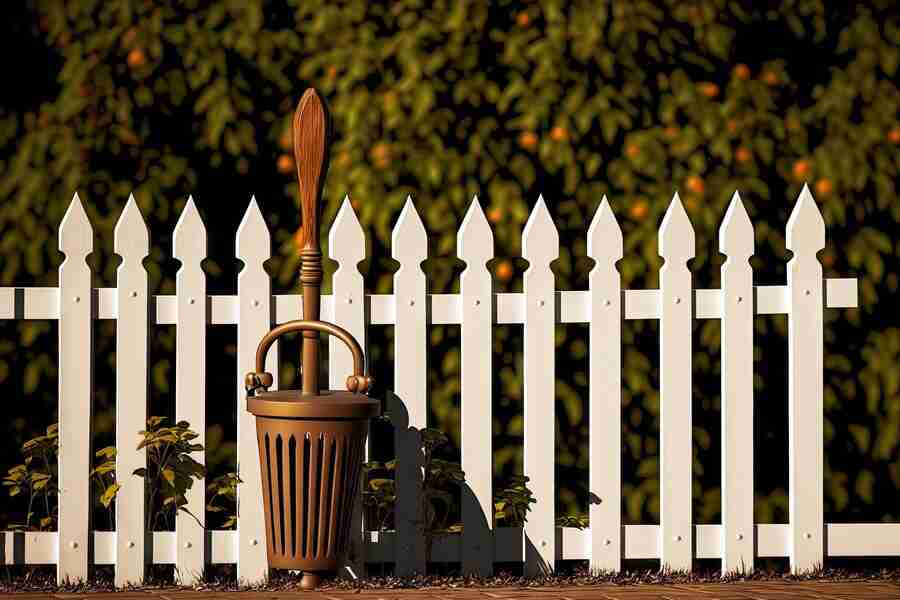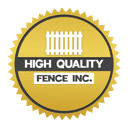In the realm of home improvement, few projects are as simultaneously practical and aesthetically pleasing as fencing. Whether it’s to delineate property boundaries, enhance privacy, or simply elevate the look of your outdoor space, the right fence can make a significant difference. What’s even more appealing is the opportunity to embark on a DIY journey, transforming ordinary materials into functional and charming barriers.
From repurposing wooden pallets to crafting classic picket fences, the world of DIY fencing projects offers a myriad of creative possibilities. With a dash of ingenuity and a sprinkle of elbow grease, homeowners can take control of their outdoor spaces, infusing them with personal style and character. So, let’s explore the art of DIY fencing, from humble beginnings to stunning finishes, and discover how these projects can not only enhance the beauty of our homes but also cultivate a sense of pride in our craftsmanship.
Understanding Materials: From Pallets to Pickets:
When diving into the world of DIY fence projects, understanding the various materials available is essential. From rustic pallets to timeless pickets, each material brings its own unique charm and benefits. Pallets offer a budget-friendly and eco-friendly option for those looking to repurpose wood, while pickets provide a classic and traditional aesthetic.
Exploring the characteristics and potential of different materials enables homeowners to make informed decisions that align with their vision for their fence. Whether you prioritize sustainability, durability, or cost-effectiveness, there’s a material suited to meet your needs and preferences.
Essential Tools for DIY Fence Building
When it comes to DIY fence building, having the right tools is essential for a successful project. Here’s a rundown of the must-have tools to ensure your fence construction goes smoothly:
- Measuring Tape: Accurate measurements are crucial for proper fence alignment and spacing. A quality measuring tape allows you to measure distances precisely, ensuring your fence is built to the correct dimensions.
- Level: Maintaining straight and level lines is key to a professional-looking fence. A level helps ensure that your posts and panels are installed evenly, preventing any unsightly sloping or unevenness.
- Circular Saw: Cutting materials to size is a fundamental aspect of fence construction. A circular saw allows you to make precise cuts quickly and efficiently, whether you’re working with wood, metal, or composite materials.
- Hammer: Securing nails or fasteners is necessary for assembling fence components. A sturdy hammer provides the force needed to drive nails into posts and rails securely, ensuring the structural integrity of your fence.
- Post Hole Digger: Digging holes for fence posts is often one of the most labor-intensive tasks. A post hole digger makes this job easier and more efficient, allowing you to dig consistent and properly sized holes for sturdy post installation.
With these essential tools at your disposal, you’ll be well-equipped to tackle your DIY fence building project with confidence and precision. From measuring and leveling to cutting and securing, having the right tools makes all the difference in achieving professional results.
Planning Your Fence: Measurements and Design Considerations
Effective planning is the cornerstone of a successful DIY fence project. Before diving into construction, it’s essential to carefully measure the area where the fence will be installed and consider design elements such as height, style, and materials. Taking accurate measurements ensures that the fence fits seamlessly into the landscape while adhering to local regulations and property boundaries.
Moreover, thoughtful design considerations allow homeowners to personalize their fences to complement the architectural style of their home and reflect their individual tastes. By investing time in meticulous planning, DIYers set themselves up for a smooth and satisfying construction process.
Upcycling Pallets: A Sustainable Approach to Fencing
For eco-conscious DIYers, upcycling pallets presents an attractive and sustainable approach to fencing. Pallets, often discarded as waste, can be repurposed into sturdy and visually appealing fences with a bit of creativity and effort. By giving these wooden pallets a new life as fencing materials, homeowners not only reduce waste but also minimize their environmental footprint.
Upcycled pallet fences exude rustic charm and lend a unique character to outdoor spaces, making them a popular choice for those seeking a budget-friendly and environmentally conscious fencing solution. With some basic woodworking skills and a willingness to think outside the box, DIY enthusiasts can transform ordinary pallets into functional and eye-catching fences that enhance the beauty of their homes.
Building a Classic Picket Fence: Step-by-Step Guide
Building a classic picket fence is a timeless endeavor that adds charm and character to any home’s exterior. In this step-by-step guide, we’ll walk you through the process of creating your own picturesque picket fence, from planning to installation.
- Marking the Layout: Begin by marking the layout of your fence using stakes and string, ensuring straight lines and consistent spacing between posts. This initial step sets the foundation for a well-aligned and visually appealing fence.
- Digging Post Holes: With the layout marked, use a post hole digger to dig holes for the fence posts at regular intervals along the string line. The depth of the holes should be determined by the height of your fence panels, typically around one-third the height of the post.
- Setting Posts in Concrete: Once the holes are dug, set the fence posts securely in concrete, ensuring they are level and plumb. Allow the concrete to cure according to the manufacturer’s instructions before proceeding with the next steps of construction.
- Attaching Horizontal Rails: After the concrete has cured, attach horizontal rails to the posts using screws or nails, ensuring they are evenly spaced and level. These rails provide structural support for the picket panels and contribute to the overall stability of the fence.
- Installing Pickets: Finally, install the vertical pickets between the horizontal rails, securing them in place with nails or screws. Take care to ensure each picket is evenly spaced and level, resulting in a cohesive and visually pleasing fence design.
With these step-by-step instructions, building a classic picket fence becomes a manageable and rewarding DIY project that enhances the beauty and charm of your home’s exterior.
Adding Style with Creative Fence Designs
While fences serve a practical purpose, they also offer an opportunity to inject style and personality into outdoor spaces. Creative fence designs can serve as focal points, enhancing the overall aesthetic of a property.
From geometric patterns to intricate lattice work, the design possibilities are endless. Incorporating elements such as decorative post caps, stained glass inserts, or climbing vines can further elevate the visual appeal of a fence. By thinking outside the box and embracing creativity, DIYers can turn their fences into works of art that reflect their unique taste and style.

Enhancing Privacy: Tips and Tricks for DIY Fence Installation
Enhancing privacy through DIY fence installation is a key consideration for many homeowners seeking to create secluded outdoor sanctuaries. To achieve optimal privacy while maintaining aesthetic appeal, consider the following tips and tricks:
- Opt for taller fence panels: Choose fence panels that are taller than standard to provide additional privacy and block unwanted views.
- Strategic placement of plants or shrubs: Planting tall bushes or trees along the fence line can create a natural barrier and enhance privacy.
- Incorporate lattice or slat screens: Adding lattice panels or slat screens to your fence design can increase privacy without sacrificing airflow or natural light.
- Ensure proper spacing between boards or panels: Maintain consistent spacing between fence boards or panels to prevent gaps that compromise privacy.
- Regular maintenance: Perform routine inspections and maintenance to address any damage or wear that may compromise the privacy of your fence over time.
By implementing these tips and tricks, DIYers can create a private and tranquil outdoor oasis that provides a welcome escape from the outside world while maintaining the beauty and integrity of their fences.
Maintenance and Care for Long-Lasting Fences
Once your DIY fence project is complete, proper maintenance is essential to ensure its longevity and aesthetic appeal. Regular inspections for damage, such as rot or insect infestation, are crucial to address issues before they escalate. Depending on the material used, routine cleaning may also be necessary to remove dirt, mold, or mildew buildup. Wood fences may require staining or sealing every few years to protect against moisture and UV damage, while metal fences may benefit from rust prevention treatments.
Additionally, trimming vegetation around the fence line can prevent overgrowth that may compromise its stability. By investing time and effort in maintenance, homeowners can prolong the lifespan of their fences and enjoy years of beauty and functionality.
Inspiring DIY Fence Project Ideas for Every Home
With endless design options and materials to choose from, DIY fence projects offer boundless opportunities for creativity and customization. Whether you prefer a rustic aesthetic with reclaimed wood or a modern vibe with sleek metal panels, there’s a DIY fence project suited to every home. Consider incorporating unique elements such as built-in planters, decorative lighting, or artistic accents to infuse personality into your fence design.
From small-scale projects like garden borders to larger installations encompassing entire properties, the only limit is your imagination. By exploring inspiring DIY fence project ideas, homeowners can embark on a transformative journey to enhance their outdoor spaces and create lasting memories for years to come.
DIY fence projects offer homeowners an exciting opportunity to enhance their outdoor spaces while showcasing their creativity and craftsmanship. From upcycling pallets to building classic picket fences, the possibilities are endless. By understanding materials, utilizing essential tools, and careful planning, DIYers can create fences that not only serve practical purposes but also add aesthetic value to their properties. Moreover, maintaining and caring for these fences ensures their longevity and continued beauty over time.
If you’re ready to embark on your own DIY fence project or seeking professional assistance, look no further than High Quality Fence. With our expertise and dedication to excellence, we’ll help bring your vision to life. Contact us today at 209-815-9015 or email us at info@highqualityfence.com to discuss your fencing needs and start transforming your outdoor space. Let’s create a fence that not only enhances your property but also reflects your unique style and personality.


